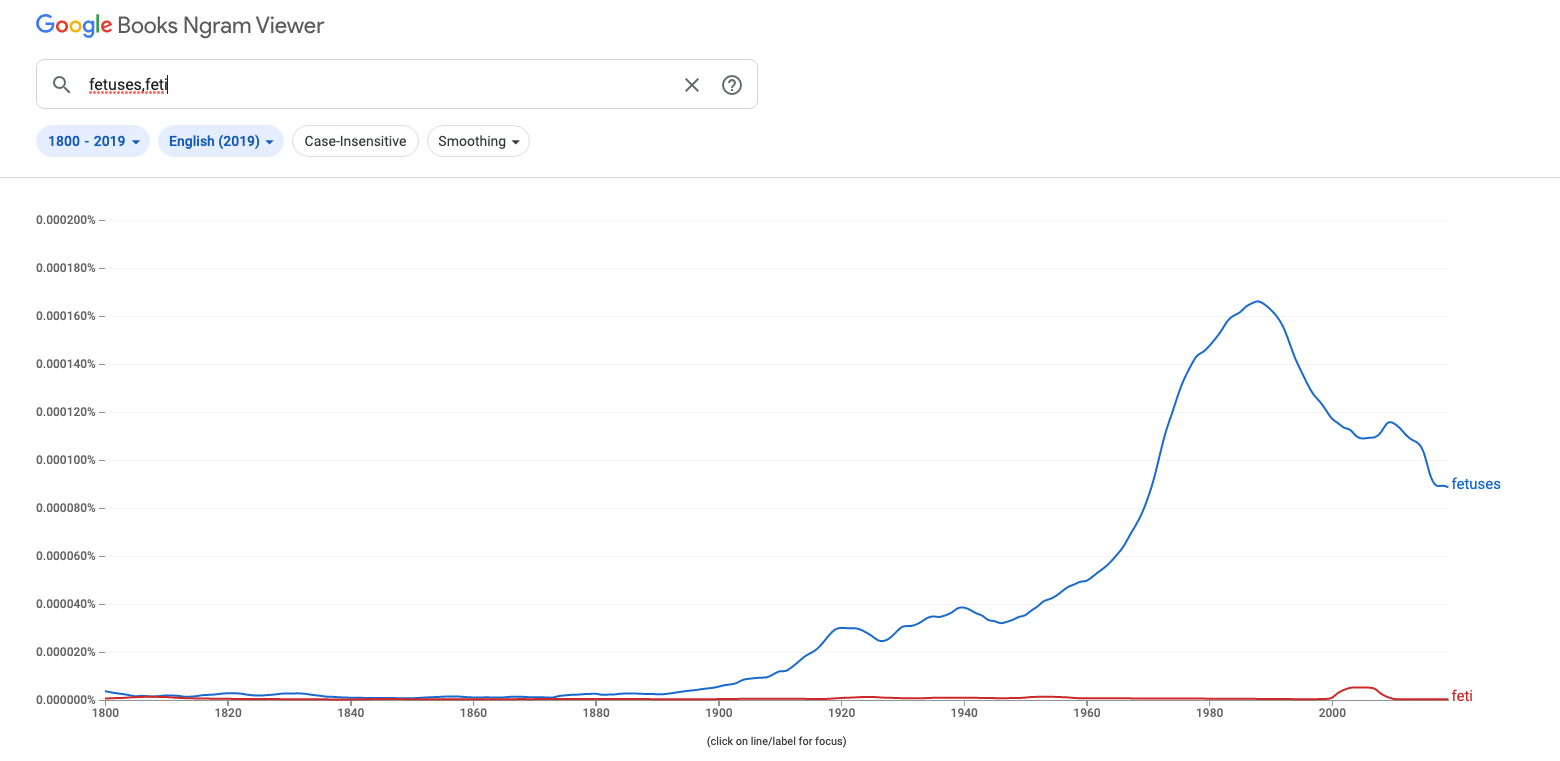Hypercorrection
Published: 2021-12-19When I learned the English word “fetus”, I immediately wondered what its plural form was. Looking at the Wiktionary, I understood that its plural form is “fetuses”. At the same time, I noticed that it also says “(hypercorrect) feti”, which I was considering as a candidate.
“Hypercorrection” generally refers to the non-standard use of language based on a false analogy with a correct form (called 過剰修正 in Japanese). One typical example is the usage of “between you and I”. This is totally understandable because “you and I” as a subject sounds pretty natural, and “between you and …” works as well. But of course, grammatically speaking, it should be “between you and me”. It seems that Shakespeare also used that phrase, which makes me think again about what “grammatically correct” means.
“Feti” as the plural of “fetus”, or “octopi” as the plural of “octopus”, is obviously based on analogy with “stimuli” for “stimulus” (or something like that). You’ll see that this is wrong by looking at the original Latin declension. Firstly, English nouns are often based on the Latin nouns in the nominative case. So, these three words correspond to Latin “fētus”, “octōpūs”, and “stimulus”. However, their plural forms are “fētūs”, “octōpodēs”, and “stimulī” respectively, which refutes that assumption.
Just to be sure, I checked the Ngram for the words “fetuses” and “feti”:
